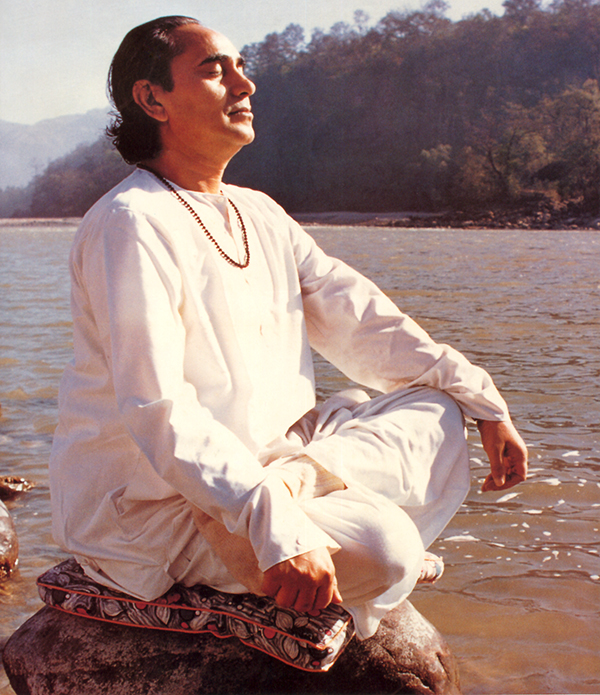Part 1
The method of meditation is an inward process that finally leads one to the foundation of life and light. This is the center of consciousness, from where consciousness flows on various degrees and grades. A human being is a citizen of two worlds: the world within and the world without. To create a bridge between these two requires human effort, but it is possible for one to do so; it is possible to live in the world and yet remain above it.
This art of living and being has its source in the method of meditation. That which cannot be taught by modern education can be understood and realized by practicing meditation. No one teaches modern people how to be still, and they never find the time and opportunity to be still. To be still is a must for meditation; for only then can the truth or the Reality within reveal itself.
So meditation is a method of knowing truth, that which is within every human being. Meditation is a small technique that can be learned in a few minutes, but it is a very practical subject, and the benefits of meditation are immense.
There are many steps for attaining the highest state of meditation, and anyone who desires to practice can attain a state of meditation with a few months. The first benefit of meditation is freedom from stress and strain; the second benefit is clarity of mind; the third benefit is knowledge of one’s own internal states. Then one is established in one’s essential nature, which is happiness, peace, and bliss. Meditation helps one to attain the highest level of equilibrium and tranquility. With persistence, it leads one to the state of turiya, the state beyond.
But to attain these benefits, one must understand that knowledge is within and that one will have to practice. Practice will make one perfect. Without practice, one cannot have experience, and without experience one cannot be guided. Experience should be one’s guide.
This requires that one learn to discipline oneself. Discipline does not mean that someone should impose discipline on someone else; it means that one should learn to discipline oneself. In American life, in this affluent society, people do not understand the value of discipline. They think discipline is something very bad, that it is being told what not to do.
Even parents do not discipline their children― because they themselves are not disciplined. They don’t impart any exemplary education, environmental education, home education; so education is received from the colleges and universities, and that is not sufficient.
That which one learns from the so-called education that is imparted all over the world is mere information. People do not realize anything; they only receive information― what to do and what not to do. No one tells them how to be. Real education starts when one starts educating oneself. Whatever one has learned, that learning should go through inner filtration.
How can one apply the education that one has received? Human beings have tremendous potentials; they can do wonders. History shows how a human being can lead the masses and sacrifice himself for the masses, how he can become a symbol of selflessness. Discipline makes one aware of how to become selfless.
As long as a person remains a petty individual, arrested by body consciousness, he will not enjoy life because he is still selfish, and whatever he does, he does for selfish motives. Real enjoyment comes when one starts renouncing for others: “I do not need it, I do not want it. Come on, you have it; you enjoy it.”
In a relationship, that selflessness is very important. But relationships in modern society are crumbling because every individual is becoming more selfish. People do not understand the law of truth or unfoldment. That law is called expansion, and meditation is the method for expanding one’s consciousness.
Most people are not satisfied as they are, and so they are still seeking, but they are afraid of searching. And even if they are not afraid, still they do not know how to seek or where to seek, within or without. People are accustomed to searching in the external world because they have been taught to examine things, to verify things, in the external world. But nobody teaches them how to see within, how to look within, how to think, how to come to certain conclusions, how to decide, and how to take action according to their own decisions.
All individuals should know themselves both from within and without. There are many means furnished by our society, by our educational system, to study and understand the external world, but there is no concrete education that gives people the means to watch within, to verify within.
Meditation shows one how to learn to know within oneself. There is no mystery in this method. It is a practical and systematic technique that leads one to peace and knowledge. If one knows all the things of the world and does not realize one’s inner potentials, how can one enjoy life, and how can one attain the purpose of life?
The greatest of all enjoyments is the tranquil state that can be attained through meditation. So often students get excited and want to attain the highest state in a few days’ time, forgetting that this inward method is not like other learning programs. It is an unlearning program, a journey without movement ― one advances without any movement. One remains still and yet attains one’s goal.
. . . to be continued
Reprinted from Dawn vol 3, no 4

